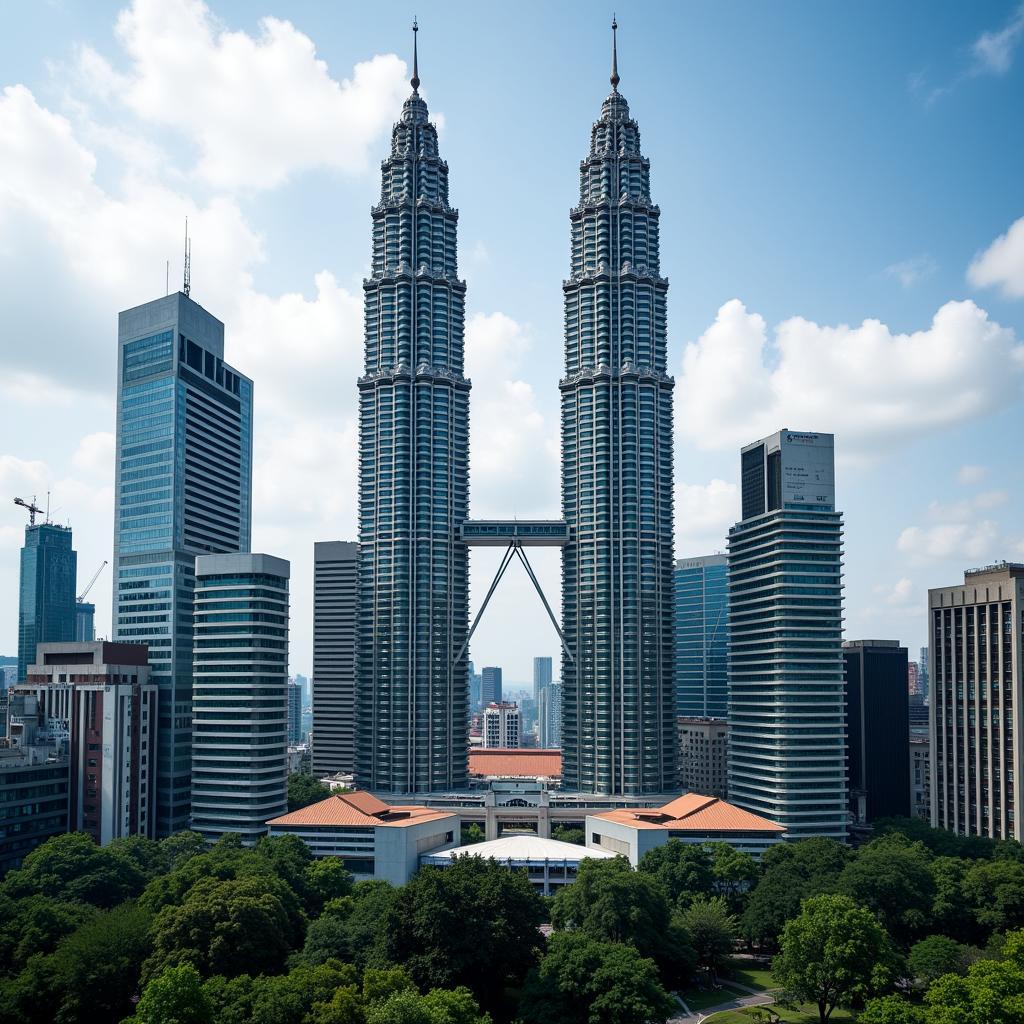Asean And Regional Free Trade Agreements (FTAs) have become pivotal in shaping Southeast Asia’s economic landscape. These agreements have not only fostered greater trade and investment flows but have also contributed significantly to regional integration and economic growth. This article delves into the complexities of ASEAN’s free trade landscape, exploring its benefits, challenges, and future prospects.
Understanding the Importance of ASEAN Free Trade Agreements
ASEAN’s commitment to free trade is reflected in its network of FTAs, both within the bloc and with external partners. The ASEAN Free Trade Area (AFTA) forms the cornerstone of this network, aiming to reduce tariffs and non-tariff barriers among member states. This has created a more integrated market, promoting intra-regional trade and enhancing the region’s competitiveness in the global economy.
 ASEAN Free Trade Area Network
ASEAN Free Trade Area Network
Beyond AFTA, ASEAN has actively pursued FTAs with key economic partners such as China, Japan, South Korea, India, Australia, and New Zealand. These agreements have expanded market access for ASEAN businesses, facilitated foreign direct investment, and contributed to the region’s economic dynamism. The Regional Comprehensive Economic Partnership (RCEP), which includes ASEAN and its major trading partners, is a testament to ASEAN’s growing influence in shaping regional trade architecture.
Benefits and Challenges of Regional Integration through FTAs
The benefits of these free trade agreements are multifaceted. They have led to increased trade volumes, lower prices for consumers, greater economies of scale for businesses, and enhanced regional competitiveness. FTAs have also spurred investment flows, particularly in manufacturing and services, contributing to job creation and economic development. For example, the automotive industry in Thailand has benefited significantly from the reduced tariffs under AFTA, attracting investments from Japanese and European car manufacturers.
However, the path towards deeper regional integration through FTAs has not been without challenges. Non-tariff barriers, such as differing technical regulations and standards, continue to impede trade flows. The varying levels of development among ASEAN member states have also created disparities in benefiting from FTAs, with some countries facing greater challenges in adapting to increased competition. Furthermore, concerns about the impact of FTAs on domestic industries and employment require careful consideration and mitigation strategies.
Navigating the Complexities of ASEAN’s Free Trade Landscape
“ASEAN’s free trade landscape is a dynamic and ever-evolving terrain,” says Dr. Arisanti Paramita, a prominent economist specializing in Southeast Asian trade. “Navigating its complexities requires a deep understanding of the various FTAs, their provisions, and their potential impact on businesses and economies.”
The Future of ASEAN and Regional Free Trade
ASEAN is poised to play an increasingly important role in shaping the future of regional trade. The bloc’s focus on further deepening integration within AFTA and expanding its network of external FTAs will continue to drive economic growth and regional cooperation. The implementation of RCEP will further solidify ASEAN’s position as a key player in global trade.
How Will FTAs Impact ASEAN’s Future Economic Growth?
The effective implementation of FTAs, coupled with efforts to address non-tariff barriers and promote inclusive growth, will be crucial for maximizing the benefits of regional integration. Investing in infrastructure, skills development, and technological advancement will further enhance ASEAN’s competitiveness and attract greater foreign investment.
“The future of ASEAN’s economic growth is inextricably linked to its success in leveraging the opportunities presented by regional free trade agreements,” adds Dr. Paramita. “By fostering greater cooperation and addressing the remaining challenges, ASEAN can unlock its full economic potential and become a major force in the global economy.”
Conclusion
ASEAN and regional free trade agreements are instrumental in driving economic growth, fostering regional integration, and enhancing the bloc’s global competitiveness. While challenges remain, ASEAN’s commitment to free trade and regional cooperation positions the region for continued economic dynamism and prosperity. By embracing the opportunities presented by FTAs and addressing the associated challenges, ASEAN can achieve its full economic potential and become a major force in the global economy.
FAQ
- What is AFTA?
- What are the main benefits of ASEAN’s FTAs?
- What are some of the challenges of implementing FTAs in ASEAN?
- What is RCEP and how will it impact ASEAN?
- How can ASEAN maximize the benefits of regional free trade?
- What is the role of non-tariff barriers in ASEAN trade?
- What is the future outlook for ASEAN’s economic growth?
Scenarios and common questions related to ASEAN Free Trade Agreements
- Scenario: A small business owner in Vietnam wants to export their products to Indonesia. What are the tariff implications under AFTA?
- Scenario: A foreign company is considering investing in a manufacturing plant in Thailand. How can they benefit from ASEAN’s FTAs?
- Scenario: A consumer in Singapore wants to understand how FTAs affect the price of imported goods.
Further Exploration
For more information on ASEAN and regional free trade agreements, please explore the following resources on our website:
Contact Us
For any assistance or inquiries regarding ASEAN and regional free trade, please contact us:
Phone: 0369020373
Email: [email protected]
Address: Thon Ngoc Lien, Hiep Hoa, Bac Giang, Vietnam.
We have a 24/7 customer service team ready to assist you.

